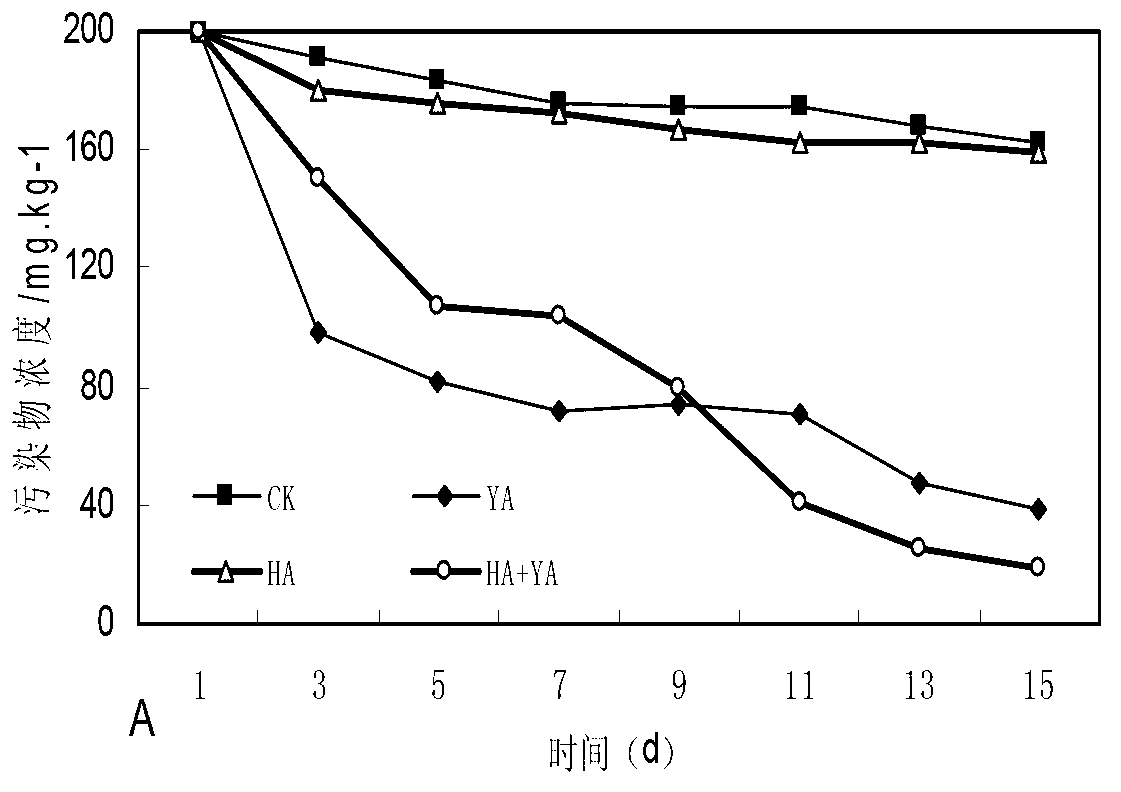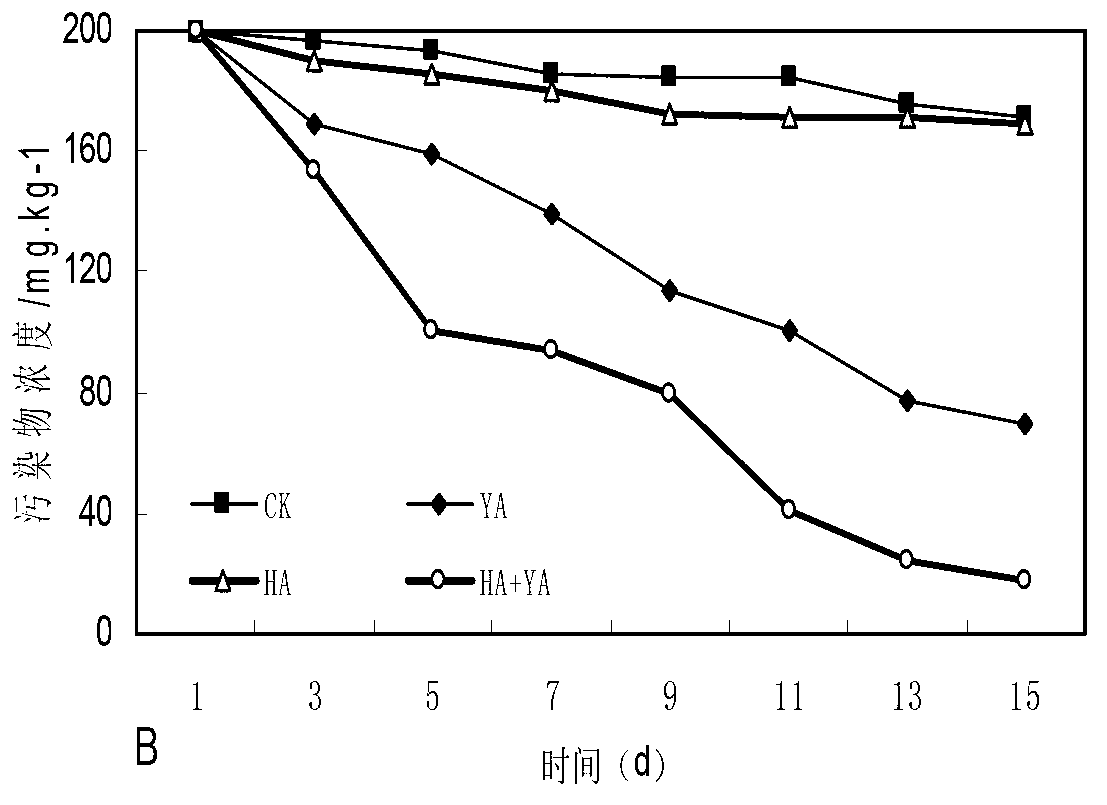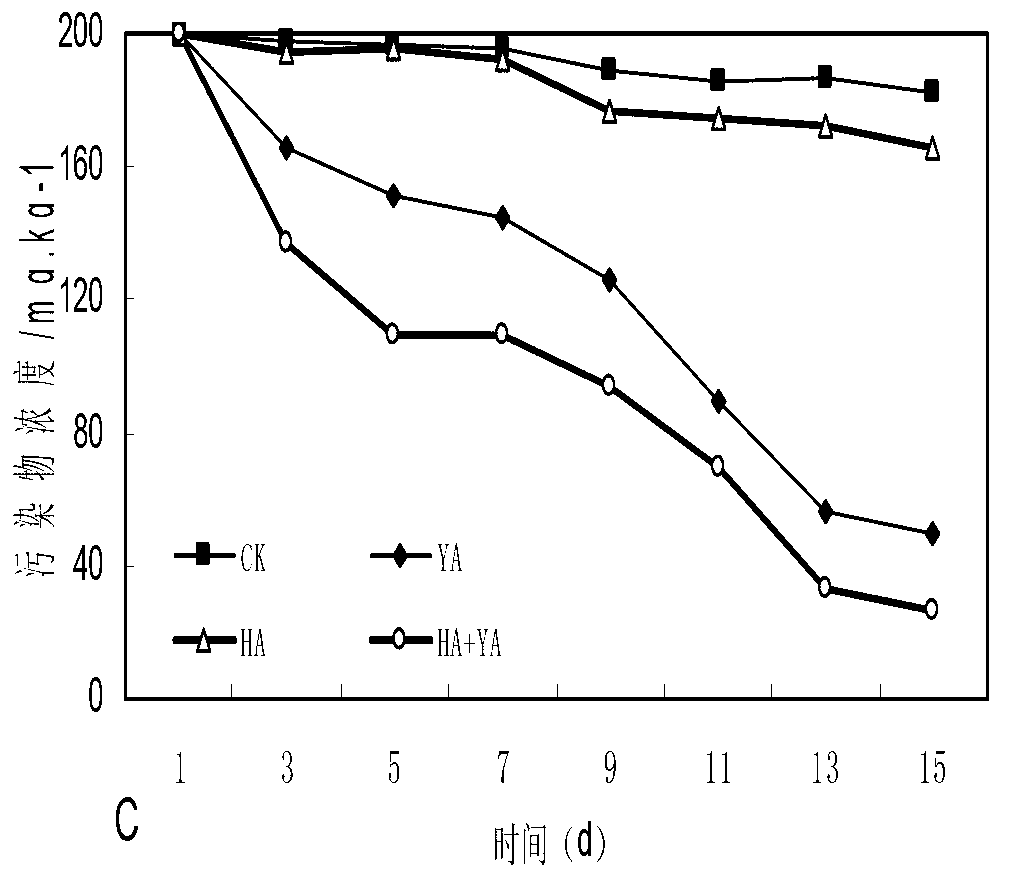Bacterial strain for degrading polycyclic aromatic hydrocarbon and application of bacterial strain cooperated with surface active agent in soil remediation
A technology of surfactants and polycyclic aromatic hydrocarbons, which is applied in the fields of environmental engineering and microbial engineering, can solve the problems of low bioavailability of PAHs and difficult microbial utilization, and achieve a wide range of degradation substrates, broad application potential, and high degradation rate. Effect
- Summary
- Abstract
- Description
- Claims
- Application Information
AI Technical Summary
Problems solved by technology
Method used
Image
Examples
Embodiment 1
[0049] The separation and screening method of tzyx3 provided by the invention.
[0050]Collect surface soil samples at a distance of 5-20 cm from the solid waste dismantling site, and use them as bacteria sources for natural enrichment culture. Add 10 g of glucose, 10 g of tryptone, and 5 g of yeast powder to a certain amount of distilled water to prepare a culture The solution was sterilized at 121°C for 20 minutes, cultured on this medium for three days, and then prepared an inorganic salt base medium, adding naphthalene, phenanthrene, fluoranthene, pyrene, benzanthracene, and benzopyrene. Polycyclic aromatic hydrocarbon compounds, the above-mentioned addition of naphthalene, phenanthrene, fluoranthene, pyrene, benzanthracene, and benzopyrene is 150mg / mL, cultured on this medium for three days, and a strain of bacteria was isolated by dilution coating and named as tzyx3; the bacterium was preserved in the "China Center for Type Culture Collection" on June 24, 2012, with the ...
Embodiment 2
[0053] Tzyx3 synergistically degrades polycyclic aromatic hydrocarbons in polluted soil with humic acid, a surfactant.
[0054] Select 100g of PAH-contaminated soil, mix tzyx3 with the soil at an amount of 2.0% (mass percentage), use humic acid as the surfactant, add 0.1% of the dry weight of the polluted soil, add a small amount of water to keep the soil moisture content At about 15%, put it into a constant temperature shaker, control the culture temperature at a constant temperature of 25°C, shake and cultivate and repair for 15 days, and then the composite polluted soil can be repaired and the repaired soil can be obtained.
[0055] figure 1 - Image 6 The kinetic degradation curves of PAHs naphthalene, phenanthrene, fluoranthene, pyrene, benzanthracene, and benzopyrene over time in different treatment soils were respectively shown. The four different treatments were control polluted soil sample (CK), no addition of humic acid, no inoculation; inoculation of PAHs degrading...
Embodiment 3
[0058] Different from Example 2, the surfactant of this scheme is rhamnolipid, and data monitoring shows that after 15 days, the removal rate of rhamnolipid+YA treated soil polycyclic aromatic hydrocarbons is:
[0059] Naphthalene 94.2%, phenanthrene 92.1%, fluoranthene 71.6%, pyrene 83.8%, benzanthracene 83.6%, benzopyrene 73.8%.
PUM
 Login to View More
Login to View More Abstract
Description
Claims
Application Information
 Login to View More
Login to View More - R&D
- Intellectual Property
- Life Sciences
- Materials
- Tech Scout
- Unparalleled Data Quality
- Higher Quality Content
- 60% Fewer Hallucinations
Browse by: Latest US Patents, China's latest patents, Technical Efficacy Thesaurus, Application Domain, Technology Topic, Popular Technical Reports.
© 2025 PatSnap. All rights reserved.Legal|Privacy policy|Modern Slavery Act Transparency Statement|Sitemap|About US| Contact US: help@patsnap.com



